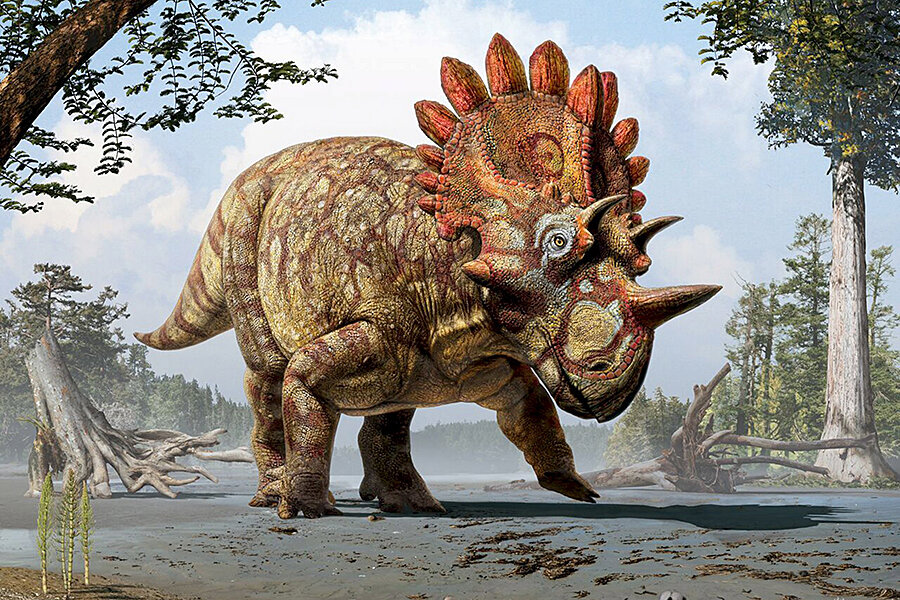Regal 'Hellboy' dinosaur discovered in Alberta
Loading...
Adorned with sharp horns and a bony shield, Regaliceratops looks suited for battle. But researchers say this newly-discovered dino was probably more into courting than combat.
After a grueling, drawn-out excavation, scientists from the Royal Tyrrell Museum of Paleontology have announced the discovery of a new dinosaur species, Regaliceratops peterhewsi. Its unique features, described Thursday in Current Biology, could provide evidence of previously unseen evolutionary trends.
About a decade ago, geologist Peter Hews discovered a striking, 5-foot skull along Alberta’s Oldman River. Researchers had to excavate carefully, since the 68-million-year-old specimen was lodged in dense rock, precariously overlooking the (environmentally protected) river below. They nicknamed the fossil “Hellboy” – a nod to the two small horns above its eyes, and to the difficulty of the excavation.
Regaliceratops was a herbivorous relative of the instantly-recognizable Triceratops. Like its cousin, it boasts a bony shield behind its head, two horns above its eyes, and one horn on its nose. Unlike Triceratops, Hellboy’s nose horn was remarkably long. The horns above its eyes, by comparison, were “almost comically short.” Its shield featured rows of bony plates, giving it the appearance of a crown.
At one time, paleontologists believed that ceratopsid dinosaurs used their cranial features to protect themselves from predators. But not likely, according to lead author Caleb Brown.
“When the first horned dinosaurs were found – this was Triceratops – we thought these were probably used for defence,” Dr. Brown told the Calgary Herald. “You have these iconic images of Triceratops doing battle with Tyrannosaurus rex. [But] the more horned dinosaurs that we find, the less the explanation of defence makes sense. There are a number of species where their horns would be pretty much useless in defence.”
Brown and other researchers now suggest that the horns and shields of ceratopsid dinosaurs were actually for show. They may have functioned as “billboards,” allowing individuals to communicate or attract potential mates.
Horned dinosaurs are divided into two groups: Chasmosaurines and Centrosaurines. Chasmosaurs possess long frills, a short horn over the nose, and long horns over the eyes. Centrosaurs possess short frills, a long horn over the nose, and short horns over the eyes. But Regaliceratops breaks this rule – it was definitively a chasmosaur, but with a cranial structure resembling the then-extinct centrosaurs.
In other words, Regaliceratops represents the first case of convergent evolution in horned dinosaurs. Both groups developed similar features independently of each other, and Hellboy probably isn’t alone in that regard.
“This discovery also suggests that there are likely more horned dinosaurs out there that we just have not found yet, so we will also be looking for other new species,” Brown said in a press release.






